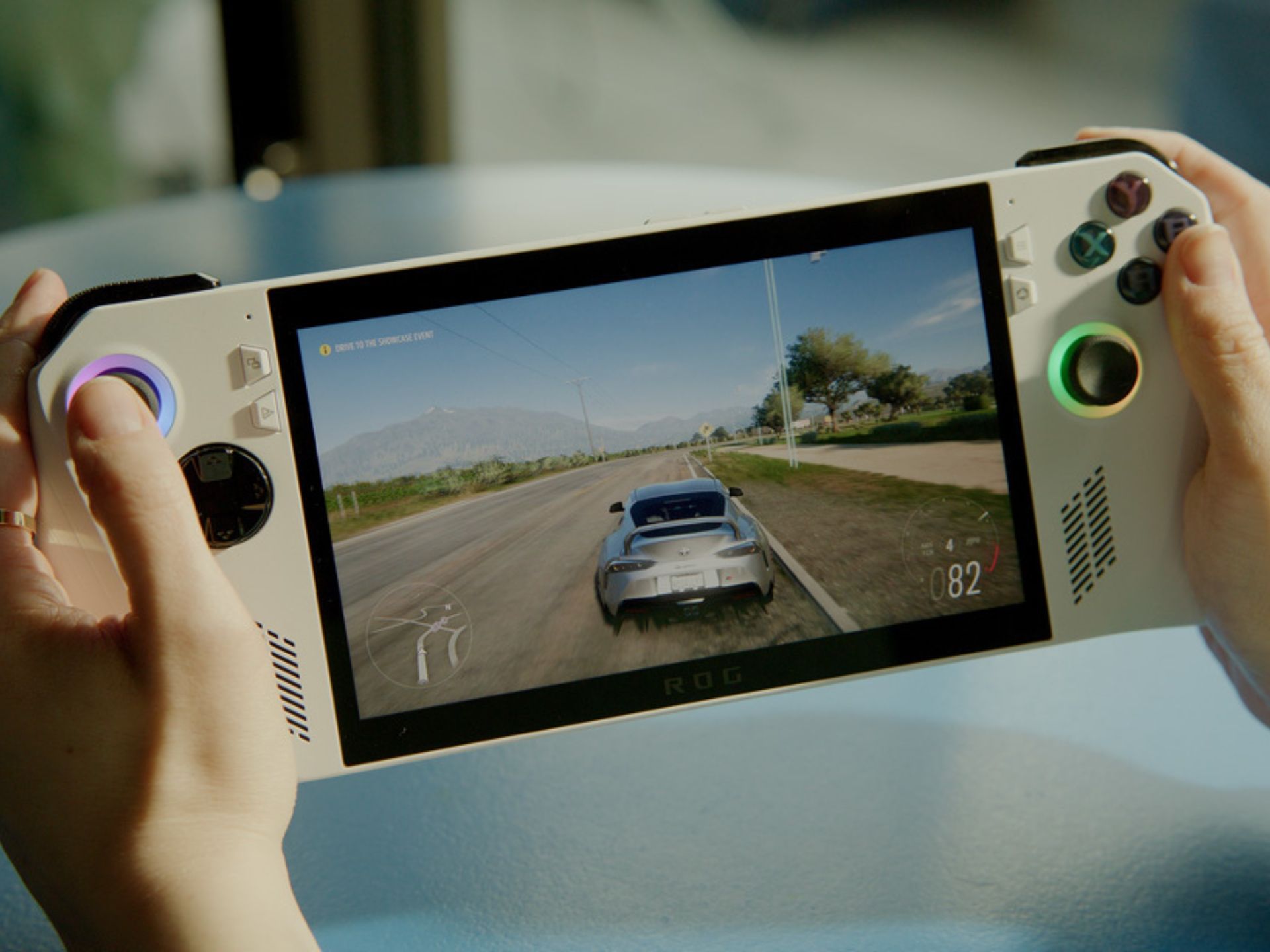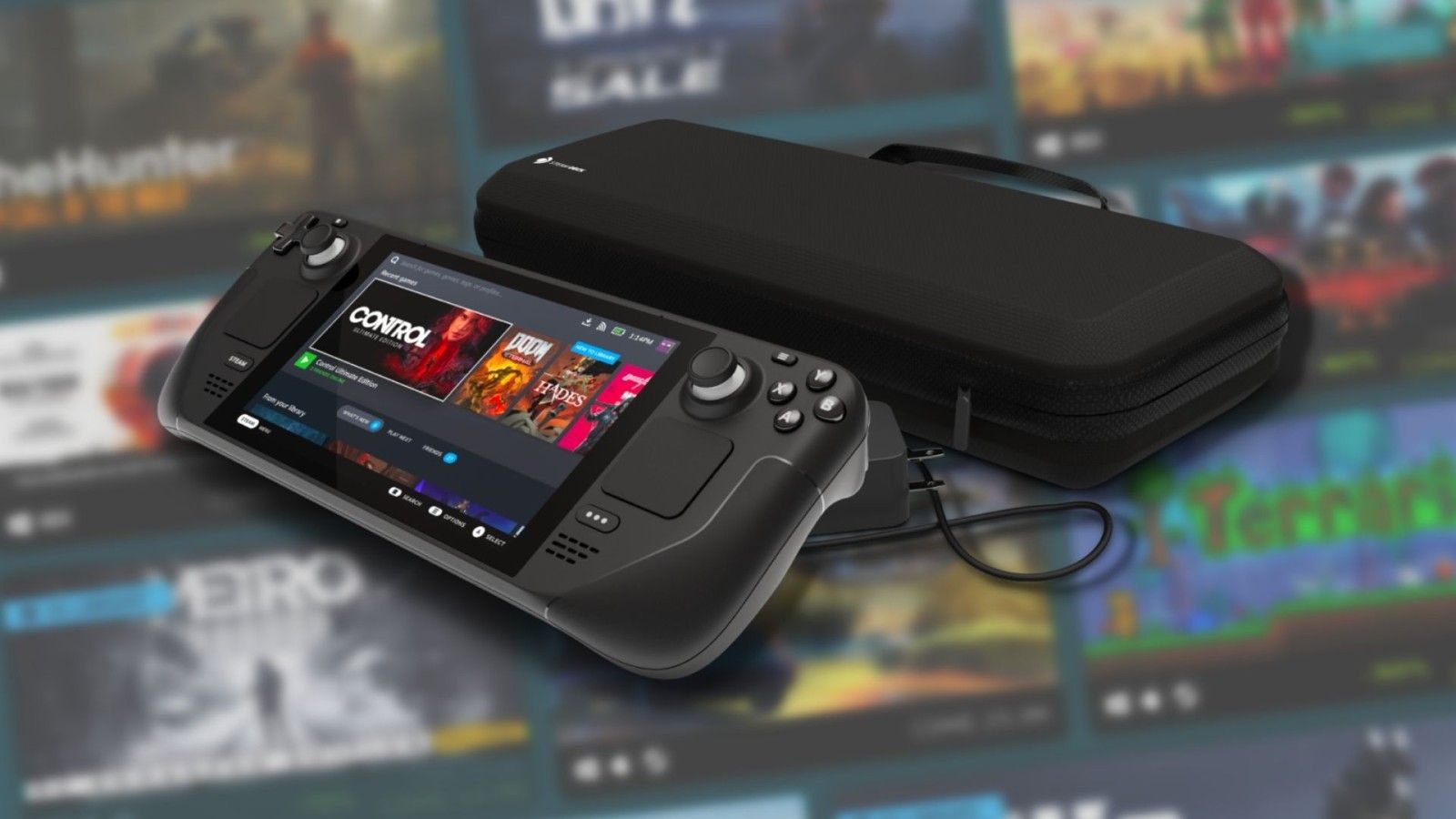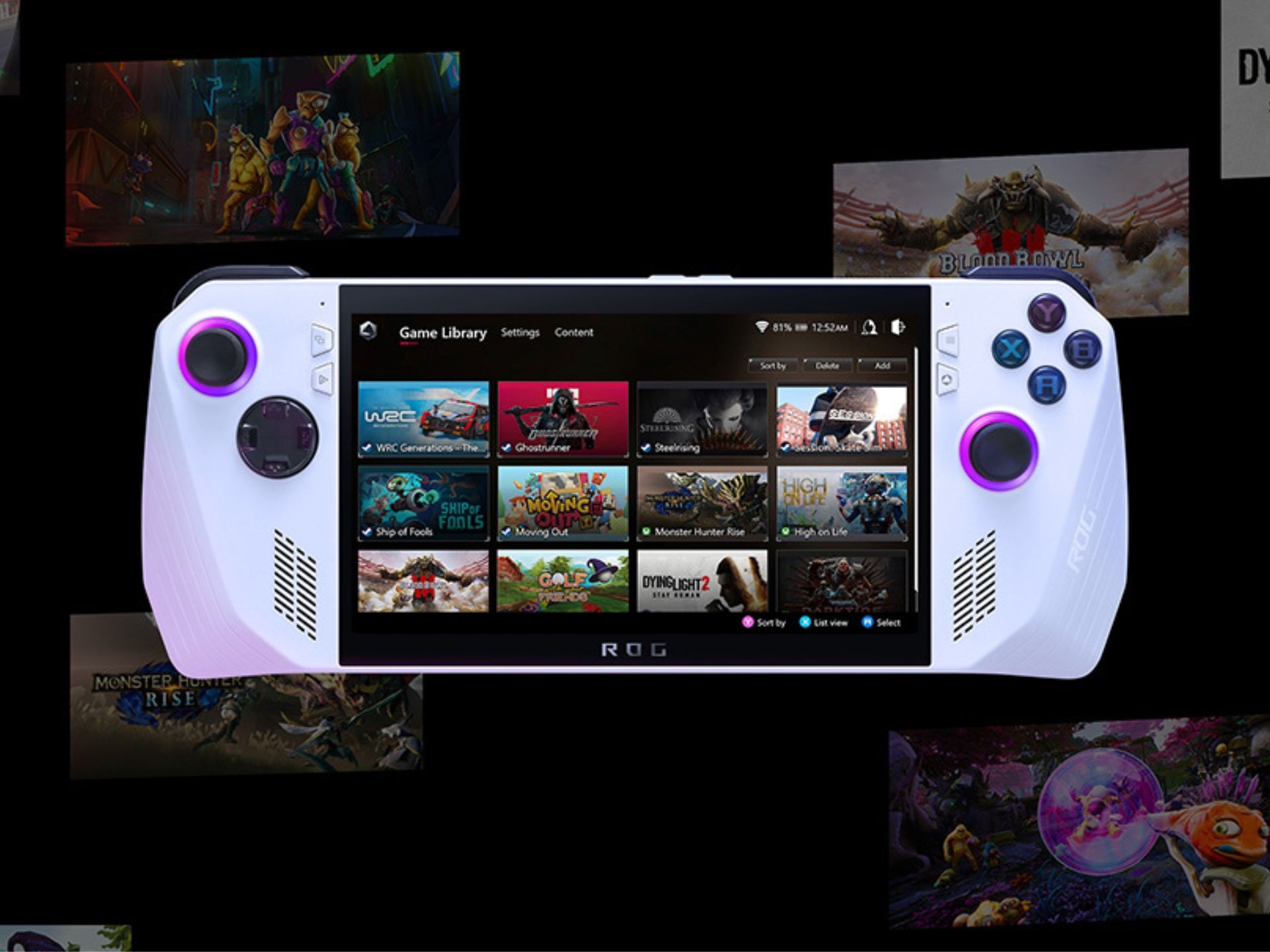-
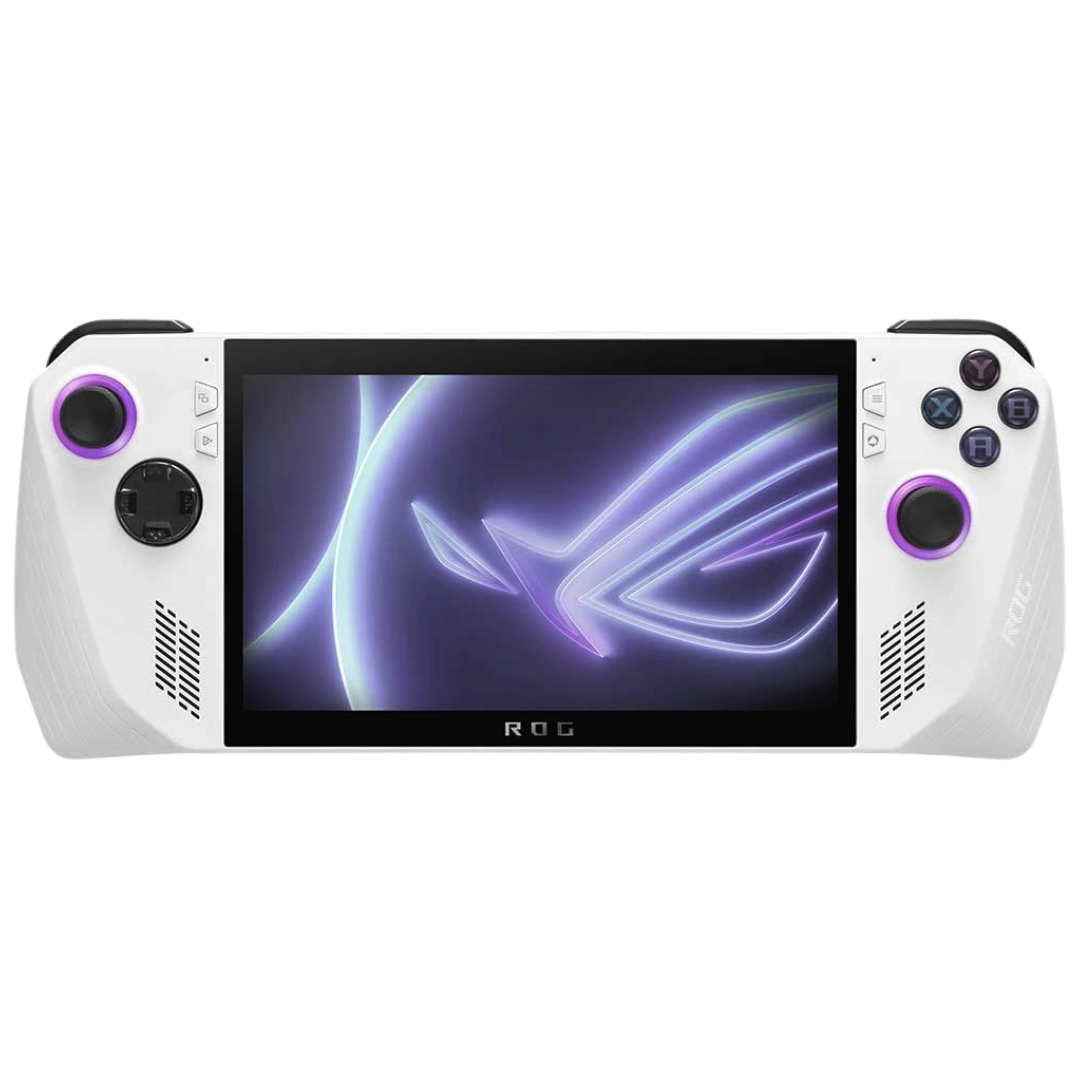
ASUS ROG Ally
The ASUS ROG Ally provides a similar experience to the Steam Deck, supporting AAA games. It comes with a 120Hz display, lightweight design, and great controls. It's powered by the AMD Zen 4-based chip, capable of running games at up to 1080p@60fps.
Pros- FHD+ 120Hz Display
- More powerful AMD Z1 Extreme processor
- Windows 11 allows for larger library of games
Cons- ASUS Armoury Crate can be made more feature-rich
- Higher cost of entry
-
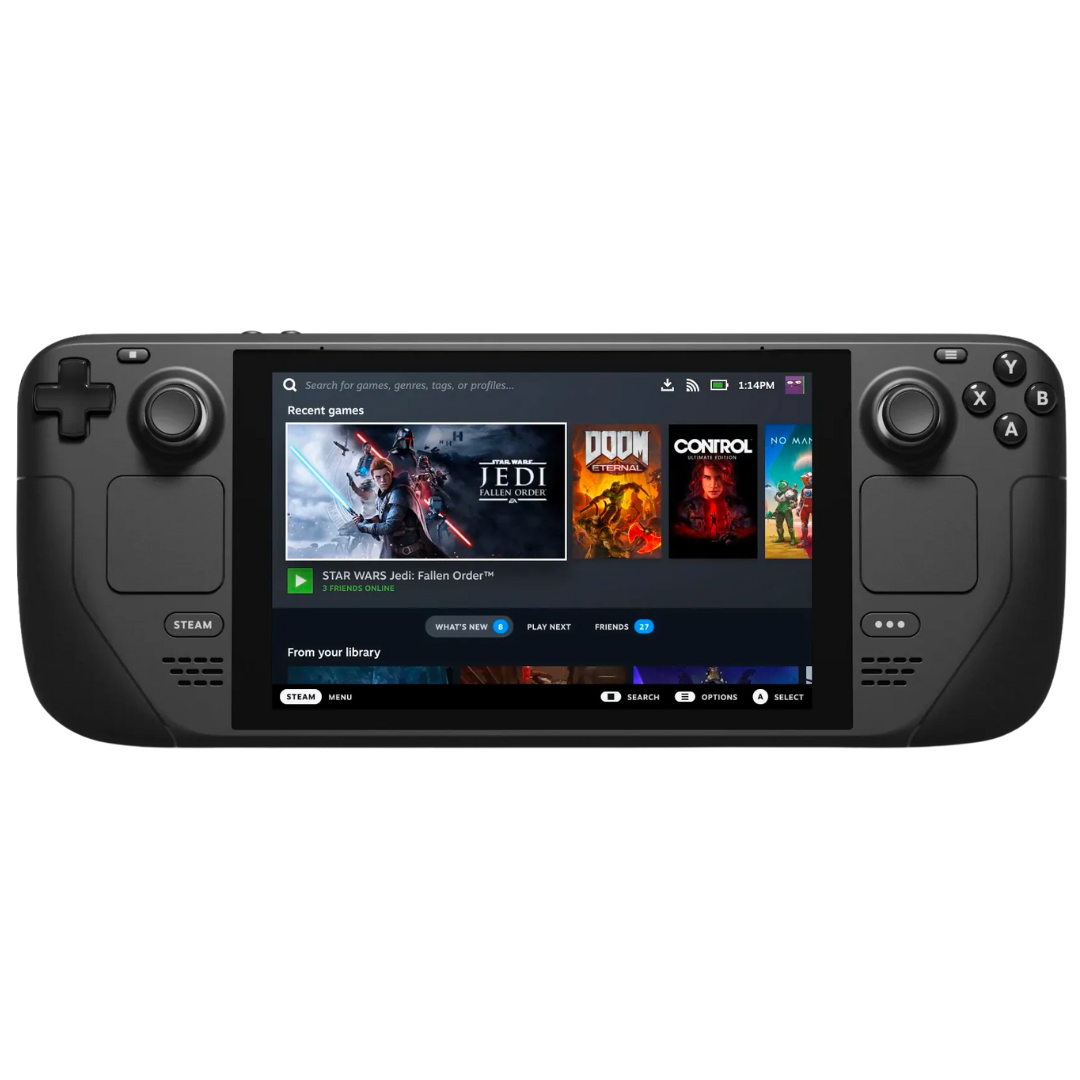
Valve Steam Deck
$415 $499 Save $84The Steam Deck supports a massive catalog of games from the Steam library, and it offers excellent performance and competitive gameplay in a small form factor. It's one of the best handheld, portable gaming devices available in 2023.
Pros- Verified games program
- More affordable
- SteamOS is optimized for controller use
Cons- Steam Deck can feel bulky to hold
- Game library is limited by SteamOS
Quick Links
The concept of handheld gaming PCs isn't new, with brands like GPD that set the trend and AYA that carried it on! But having mainstream manufacturers taking part was rare until Valve joined the fray with the Steam Deck — a device offering exceptional value and user experience for $400.
In 2023, more manufacturers are joining the fray, with the ROG Ally by ASUS being one of the most exciting additions. For $700, this device improves on much of what the Steam Deck offers, and here we will compare the two devices to understand each difference between them.
ASUS ROG Ally vs. Valve Steam Deck: Technical specifications
-

ASUS ROG Ally
The ASUS ROG Ally provides a similar experience to the Steam Deck, supporting AAA games. It comes with a 120Hz display, lightweight design, and great controls. It's powered by the AMD Zen 4-based chip, capable of running games at up to 1080p@60fps.
- Dimensions
- 11.02 x 4.37 x 0.83-1.28 inches (280 x 111 x 21.2-32.4mm)
- Playing Time
- 8 hours (claimed)
- Brand
- ASUS
- Weight
- 1.34 pounds (608 grams)
- Chipset
- AMD Ryzen Z1/ AMD Ryzen Z1 Extreme (up to 8 cores, 16 threads)
- RAM
- 16 GB LPDDR5
- Storage
- 512 GB SSD (with expandable storage via MicroSD)
- Wireless Connectivity
- Wi-Fi 6E, Bluetooth 5.2
- Headset Compatibility
- Yes
- Display
- 7-inch IPS, 1920x1080, 120Hz refresh rate, touch
- Output resolution
- Up to 4K 120Hz (DisplayPort 1.4)
- Graphics
- AMD RDNA 3-based graphics, 4 CUs (AMD Ryzen Z1) or 12 CUs (AMD Ryzen Z1 Extreme)
- Ports
- 1x USB-C, 1x ROG Xg Mobile interface, 3.5mm headphone jack
-

Valve Steam Deck
$415 $499 Save $84The Steam Deck supports a massive catalog of games from the Steam library, and it offers excellent performance and competitive gameplay in a small form factor. It's one of the best handheld, portable gaming devices available in 2023.
- Dimensions
- 11.7 x 4.6 x 1.9 inches (298 x 117 x 49mm)
- Playing Time
- 8 hours (claimed)
- Brand
- Valve
- Weight
- 1.48 pounds (669 grams)
- Chipset
- Custom AMD Zen 2-based processor (4 cores, 8 threads, up to 3.5GHz)
- RAM
- 16GB LPDDR5
- Storage
- Up to 512 GB
- Wireless Connectivity
- Wi-Fi 5, Bluetooth 5.0
- Headset Compatibility
- Yes
- Display
- 7-inch IPS, 1280x800, touchscreen, optional scratch resistant glass coating
- Output resolution
- Up to 8K@60Hz, 4K@120Hz
- Graphics
- AMD RDNA 2-based graphics, 8 CUs
- Ports
- 1x USB-C 3.2 Gen 2 (DP Alt Mode), 3.5mm headphone jack
ASUS ROG Ally vs. Valve Steam Deck: Price and availability
Valve unveiled the Steam Deck in 2021 and started delivering units in early 2022 after opening pre-orders for three different models on its storefront. A base model with 64 GB eMMC storage costs $400, a mid-tier model with a 256 GB SSD costs $530, and a high-end version with 512 GB SSD costs $650. RAM remains the same 16 GB LPDDR5 across all models.
With the ROG Ally, ASUS is partnering with Best Buy to offer the device, though it says that users in other countries around the globe will also be able to buy a unit. The device will sell in two versions, one with a vanilla AMD Z1 processor and the other with the AMD Z1 Extreme — each with 512 GB of storage and 16 GB of LPDDR5 RAM — for $600 and $700, respectively. Although, only the latter will be available from June 13, 2023. The cheaper version will make it to market at a later date.
|
Device |
Storage |
|---|---|
|
ASUS ROG Ally |
|
|
Valve Steam Deck |
|
ASUS ROG Ally vs. Valve Steam Deck: Display
In terms of pricing, the ROG Ally and Steam Deck are comparable if you look at prices and storage on offer, but when it comes to the other hardware components, the ROG Ally has clear-cut advantages.
Both models ship with a 7-inch display, albeit with different aspect ratios; the ROG features a standard 16:9 build compared to the 16:10 on Steam Deck. Regardless, the ROG Ally has a higher resolution panel that gets brighter (500 nits vs. 400 nits on the Steam Deck) and refreshes at 120Hz compared to 60Hz on the Steam Deck. Not only that, but the overall quality of the ROG panel is likely to be better too.
You can upgrade to the most expensive Steam Deck model to get a better and more gamer-friendly finish on the display glass — the 512 GB offers an anti-glare etched glass — but the ROG Ally holds a clear advantage.
ASUS ROG Ally vs. Valve Steam Deck: Performance
When it comes to performance, the newness of the ROG Ally also gives it another advantage, i.e., access to new processing hardware from AMD. The $700 ROG Ally is powered by the AMD Z1 Extreme, which leverages custom Zen 4 CPU cores and RDNA 3 GPU. On the Steam Deck, you'll see the older Zen 2 CPU cores and RDNA 2-based GPU.
The $600 ROG Ally will have the base AMD Z1 processor with lesser graphics compute units, but we don't think it will fall behind significantly.
Reviews of the two devices have shown that the ROG Ally can outperform the Steam Deck while keeping its battery endurance at acceptable levels — both device manufacturers claim 8 hours of use on a single charge. Though we say, you should take this claim with a grain of salt.
Varying factors like the graphic settings you use, games you play, and the performance profile you set for your handheld will dictate the battery life. Hence, you might experience significantly lesser battery backup than claimed.
The maximum power capability of the Steam Deck is 15W, while the ROG Ally is 30W, which shows the difference in raw performance available for use. Lastly, both devices also feature a docked mode to enjoy games on a larger screen, but with the ROG Ally, you can also access external GPUs via the ROG Xg Mobile Interface port. It will let you connect with an Nvidia GeForce RTX 4090 GPU (you can also use other GPUs) and enhance your gaming experience on a larger screen.
ASUS ROG Ally vs. Valve Steam Deck: Software experience
Another touch point for this comparison between the ROG Ally and Steam Deck is the software experience. The ROG Ally will hit the markets with Windows 11 on board, while the Steam Deck has been selling with SteamOS based on LINUX. The difference in the platform utilized means there are a few distinctions when navigating the user interface and compatibility with gaming services.
With SteamOS on the Steam Deck, you'll be able to play all titles available on Steam Library and even gain access to a host of verified titles to play well on the device. If you're the type that loves to fiddle with tech, you will be able to get Windows 11 running on the device and open it up to the Epic Games Store and Xbox Game Pass titles too.
The ROG Ally doesn't suffer from many compatibility problems. Instead, it has to deal with Windows 11 being at the core of its software experience. ASUS' Armoury Crate attempts to simplify the experience by showing installed games in a single location. Still, if you want to add more titles to the device, you will have to move into navigating Windows 11. Nevertheless, if having access to more titles is of greater importance, the ROG Ally does make the choice simpler.
ASUS ROG Ally vs. Valve Steam Deck: Which one should you buy?
If you ask us, it's not hard to judge the ROG Ally as a much better device when compared to the Steam Deck. It has a nicer display, better performance, and will let you play more titles without fiddling with the software too much. Its only drawback would be the higher cost of entry. Its $600 model isn't available at launch, and $700 can be daunting for many.
This makes the $400 base Steam Deck a lot more appealing. Its paltry 64 GB of storage can be increased via the SSD slot on board (or with the easy-to-access microSD card slot), and the software is open for add-ons will make more titles available for play.
But if you plan on having more onboard storage and are inclined towards buying the $649 Steam Deck, we recommend getting the ROG Ally instead.
-

ASUS ROG Ally
The ASUS ROG Ally provides a similar experience to the Steam Deck, supporting AAA games. It comes with a 120Hz display, lightweight design, and great controls. It's powered by the AMD Zen 4-based chip, capable of running games at up to 1080p@60fps.
-

Valve Steam Deck
$415 $499 Save $84The Steam Deck supports a massive catalog of games from the Steam library, and it offers excellent performance and competitive gameplay in a small form factor. It's one of the best handheld, portable gaming devices available in 2023.

